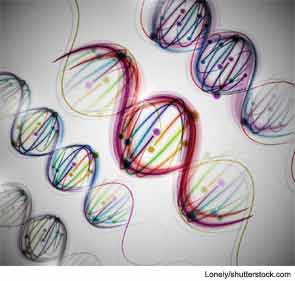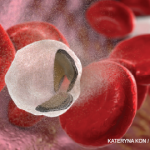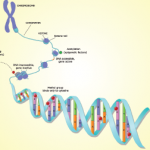
On a recent cold, clear morning, as I was navigating my way to work through the congested streets of the Longwood Medical Area, I caught the tail end of an ad on National Public Radio promising great quality care for patients with all types of arthritis. I was mildly surprised and maybe just a little bit disappointed to hear that my hospital was the sponsor. That may sound odd, but the ad stirred up some not-so-fond memories of prior advertising campaigns. These efforts unleashed a torrent of visits from patients with a wide array of difficult-to-treat musculoskeletal complaints. They shared some common themes; for many, their symptoms were refractory to treatment and their diagnoses remained vague. Understandably, these patients were dissatisfied with their prior medical care. Yet my visit did not change how they felt.

There was a sense of disappointment that few, if any, new, useful suggestions were offered. I felt sorry for letting these patients down. That is why the ad struck me with fear and trepidation. Can I really help any of these people? Would they feel frustrated about having to deal with costly insurance copayments, the need take time off of work and travel to Boston? I became deeply pessimistic about the worthiness of this whole revenue-generating exercise.
Medical advertising is pretty big business. In the first six months of 2011, advertising by American hospitals, clinics, and medical centers exceeded $700 million.1 Some of these ads can be clever. Perhaps they were penned by the ad men from the television series Mad Men. The Lenox Hill Hospital in New York City boasted how, “we had cardiologists before the city even had arteries.” In Everett, Wash., The Group Health Cooperative erected billboards that exclaimed: “Helpful for when your wife yells, ‘What is wrong with you?’ ” In contrast, our hospital’s staid punch lines were not worthy of repetition. They adhered to the dictum of David Ogilvy, one of the gurus of modern advertising, who once remarked: “What you say in advertising is more important than how you say it.” Despite the bland marketing message, once again we witnessed a surge in patient visits.
But this time, things seemed different. It was not that they presented with esoteric diseases worthy of presentation at a clinical–pathologic conference. These patients’ illnesses represented a cross-section of the conditions that most rheumatologists face on a daily basis. Yes, many of them left with the same advice that others had previously offered them.
That may have reassured some and angered others. However, I thought that I detected a subtle subtext. Several of the patients I met presented with engaging clinical issues that raised some interesting questions about the interplay between genes and environmental stresses. I thought I would share a few of their stories with you.
John: The Iron Man
As we acquire more knowledge, things do not become more comprehensible, but more mysterious.
—Albert Schweitzer
John, a middle-aged retired banker, drove to Boston from his home in coastal Rhode Island. A few years earlier, one of his severely damaged knees had been replaced at another Boston hospital. Decades earlier, John had been a college athlete; his squat body shape belied an impressive tennis career. Though his knee pain resolved after surgery, he noticed worsening joint pain elsewhere. He could no longer grip his tennis racket. His feet ached when he walked. At the age of 55, he reluctantly took an early retirement from his job.
At first, I thought there was not much else that I could offer John for the management of his severe, generalized osteoarthritis. Facing John, I was reminded of the Osler quip about running out the back door when the patient with arthritis comes through the front door. (With all of 65 square feet of office space and one door, I have nowhere to run!) But when I studied John’s hands, I realized that the degree of soft-tissue swelling and bony enlargement present around his metacarpal–phalangeal joints was inconsistent with his previous diagnoses of rheumatoid arthritis (RA) or primary osteoarthritis. A couple of X-rays and a few blood tests later, a new opinion emerged: hemochromatosis.
What a cool diagnosis for a rheumatologist to make! Unlike the internist who diagnoses hemochromatosis based on the results of a screening serum iron test in an asymptomatic patient (sheer luck) or the endocrinologist who suspects it to be present in someone with “bronze diabetes” (that’s pretty late in the game), with a minimum of clues, we can identify those afflicted relatively early in their disease.
A puffy knuckle, an errant teardrop-shaped osteophyte, some calcified cartilage. These are all the clues we need to make the diagnosis. Although it may be too late to repair the already-damaged joints, we can forestall further articular devastation and prevent major organ damage while alerting family members about the errant gene that may be lurking in their midst. John’s serum ferritin level of 2,700 left little doubt about the diagnosis. Genetic testing confirmed that he was homozygous for the most common gene causing hemochromatosis, the HFE variant.
Genes at Play
The mutation responsible for most cases of genetic hemochromatosis appears to have originated as a unique event on the short arm of chromosome 6, encoding HLA-A3. It is often described as a “Celtic mutation”—originating some 2,000 years ago in a single ancestor somewhere in central Europe and spreading west and north by population movement. Other investigators suggested that Viking migrations were largely responsible for the distribution of this mutation. Either way, you get the picture.
In most cases, the mutation, found in about 1 per 200 persons of western European ancestry, is a single-base change that results in the substitution of tyrosine for cysteine at position 282 of the HFE gene (C282Y).2 Physiologically, this mutation exerts its deleterious effects on iron metabolism by enhancing duodenal crypt cell iron transporting proteins and upregulating hepcidin production by hepatocytes.
During the era when this mutation likely arose, a time of limited dietary access to iron, the benefit of extra iron absorption may have conferred some survival advantages. One theory posits that the excess iron absorption enhanced host protection against infection, particularly against Yersinia pestis, the propagator of the Bubonic plague. It has been observed that macrophages in iron-overloaded C282Y homozygote individuals are paradoxically very low in iron. Thus, the carriers of the mutation would be predicted to have increased resistance to pathogens such as Y. pestis that require iron for growth in macrophages.
Anecdotal evidence points otherwise. In 2009, Dr. Malcolm Casadaban, a microbiologist at the University of Chicago, Illinois, who was working with a less virulent strain of Y. pestis, became the first American scientist to die of the plague in over 50 years. Intriguingly, at autopsy, it was discovered that Dr. Casadaban was, in fact, homozygous for the HFE mutation.3
Another explanation for the successful dispersion of the HFE gene may relate to the benefits it provided to individuals suffering from celiac disease (CD). CD and the hemochromatosis mutation share a similar increased incidence across Europe with comparable north–south and west–east gradients.
The two diseases have opposite effects on absorption of iron and other divalent metals. CD patients are prone to iron-deficiency anemia while the latter are susceptible to iron overload. CD patients who are heterozygous for the C282Y mutation have higher mean hemoglobin and fasting serum iron levels compared to patients carrying the HFE wild-type gene, thus preventing iron deficiency anemia and reducing the risk for infertility that was commonly seen in women with CD.
Even among those individuals who are homozygous for the HFE gene, less than one-third of men and only about 2% of women ever develop the disease.4 The HFE mutation may have provided an adaptive process to mitigate the decreased dietary iron concentration in cereal grain–based Neolithic diets. In fact, the C282Y mutation is estimated to have appeared at the beginning of the first millennia A.D., corresponding to the Roman warm period, when the northern European temperature was higher than any recorded in modern times. All of this is to say that our genes have interesting ways of interacting with their environment. So maybe Lamarck was correct?
Who Was Lamarck?
Jean-Baptiste Pierre Antoine de Monet, Chevalier de Lamarck, aka Lamarck, was an 18th-century biologist, best known for his theory of inheritance of acquired characteristics. He proposed that a complex alchemical force drove organisms up a ladder of complexity, while a second environmental force adapted them to local environments through the use and disuse of characteristics, differentiating them from other organisms. You may recall the classic example taught to high school biology students as a way to explain the concept of use and disuse; the elongated neck of the giraffe. According to Lamarck’s theory, over a lifetime of straining to reach high branches, a giraffe could develop an elongated neck. But Lamarck could not explain how this might happen, though he discussed nature’s “natural tendency toward perfection.” Though historians credit Lamarck with developing one of the first, though flawed, theories of evolution, he died in poverty and obscurity. Although his theories have been debunked, he definitely was onto something. That something became known as the field of epigenetics, the gatekeeper of the genome.
Recent research suggests that the environment can make lasting changes to the genome via epigenetic mechanisms—changes that may be passed on to future generations.
Epigenetics: A New Frontier
Recent research suggests that the environment can make lasting changes to the genome via epigenetic mechanisms—changes that may be passed on to future generations.5 Epigenetic changes can range from chemical modifications of histone proteins—such as acetylation and methylation—to modifications made to the DNA itself. Such changes usually cause chromatin compaction, which limits the ability of the RNA polymerase II transcription complex to access DNA, ultimately resulting in reduced messenger RNA (mRNA) and protein output. Basically, epigenetics can define which genes may be silenced in order to enhance protein synthesis or eliminate redundancy. It cannot change the DNA, but can modify its reading.
In a bit of a nod to La-marck, some evidence supports the concept of transgenerational epigenetic inheritance. One study in mice observed that an environmental stress that resulted in aggressive behavior in males caused the same behavior in their offspring.6 The offspring were found to have changes in the DNA methylation pattern of particular genes. A recent study found that, compared to the offspring of normal-weight fathers, children of obese fathers have different epigenetic markings on the gene for insulin-type growth factor 2 (IGF2), an important regulator during fetal growth and development.7 Similar concepts may apply to our patients. For example, in smokers with rheumatoid arthritis (RA), the tobacco smoke can convert arginine into citrulline and thus stimulate the production of autoantibodies targeting citrullinated proteins such as CCP.8 There is accumulating evidence that, in susceptible individuals, excessive exposure to certain environmental pollutants may increase their risk for developing RA. Another example may be the drug hydralazine. This well-known culprit responsible for causing drug-induced lupus syndromes has been shown to reduce DNA methylation levels in vitro. Could this be its modus operandi?
Another one of my “ad blitz” patients was a 29-year-old medical intern, Faye, who wanted to confirm her diagnosis of RA. After hearing a lecture on RA during medical school, she wondered whether this condition could explain her morning stiffness, fatigue, and some of her recurrent joint aches. Despite these symptoms, she never observed any swollen joints, and a series of sequential ultrasound studies of both hands have been normal. For the past three years, despite having an array of abnormal lab results that would be consistent with RA (positive rheumatoid factor and CCP antibody, elevated c-reactive protein, and erythrocyte sedimentation rate), she continues to demonstrate an entirely normal joint exam.
Nonetheless, her treating rheumatologist felt strongly that she was destined to develop full-blown RA, and recommended that Faye begin treatment with an anti–tumor necrosis factor inhibitor. The option of using methotrexate was bypassed because of Faye’s wish to conceive sometime in the next year.
Her case is unusual; after all, given the results of her lab tests, it would seem likely that Faye would have developed full-blown clinical RA by now. Why hasn’t she? Can some form of epigenetic modification be at work here? (Turn to p. 1 to read more about epigenetics in RA in “RA’s Smoking Guns.”)
A recent, intriguing study from Johns Hopkins University implicated DNA methylation as a potentially important intermediary of the genetic risk in RA.9
Most genetic changes associated with disease do not occur in protein-coding regions of DNA, but in their regulatory regions. Clearly, there is more to the genetics of a particular disease than simply identifying its critical genes. DNA methylation may be one of the key players working behind the scenes to determine whether a disease is phenotypically expressed or remains clinically dormant, locked inside the host’s genetic code. Fortuitously, this interesting work was published around the time of Faye’s visit; she left my office without a prescription (she didn’t need one) but armed with a copy of the paper’s abstract.
Lessons Learned
The term “nature versus nurture” was coined by Francis Galton, a cousin of Charles Darwin, to reflect the balance between heredity and environment on social advancement. Yet this term can apply to virtually all aspects of clinical medicine. The great mystery of why some people become ill and others stay healthy is slowly being unraveled. We are only beginning to observe and understand how environmental stresses can influence the genetics and the phenotype of autoimmune diseases. I think Darwin would have loved rheumatology.
Dr. Helfgott is physician editor of The Rheumatologist and associate professor of medicine in the division of rheumatology, immunology, and allergy at Harvard Medical School in Boston.
References
- Newman AA. A healing touch from hospitals. New York Times. September 13, 2011. P B2. Available at www.nytimes.com/2011/09/13/business/health-care-ad-spending-rises-advertising.html. Accessed February 13, 2013.
- Reuben A. Praise ye the god of iron. Hepatology. 2004;40:1231-1234.
- First U.S. scientist to die of plague in 50 years worked in labs with ‘harmless’ bacteria. Daily Mail Online. February 28, 2011. Available at www.dailymail.co.uk/sciencetech/article-1360783/Malcolm-Casadaban-U-S-scientist-die-plague-50-years.html. Accessed February 13, 2013.
- Allen KJ, Gurrin LC, Constantine CC, et al. Iron-overload–related disease in HFE hereditary hemochromatosis. N Engl J Med. 2008;358:221-230.
- Morris KV. Lamarck and the missing lnc. The Scientist. October 1, 2012. Available at www.the-scientist.com/?articles.view/articleNo/32637/title/Lamarck-and-the-Missing-Lnc. Accessed February 13, 2013.
- Franklin TB, Mansuy IM. Epigenetic inheritance in mammals: Evidence for the impact of adverse environmental effects. Neurobiol Dis. 2010;39:61-65.
- Soubry A, Schildkraut JM, Murtha A, et al. Obesity is associated with IGF2 hypomethylation in newborns: Results from a Newborn Epigenetics Study (NEST) cohort. BMC Medicine. 2013;11:29.
- Klareskog L, L Alfredsson L, Rantapää-Dahlqvist S, et al. What precedes development of rheumatoid arthritis? Ann Rheum Dis. 2004;63(Suppl 2):ii28–ii31.
- Liu, Y, Aryee MJ, Padyukov L, et al. Epigenome-wide association data implicate DNA methylation as an intermediary of genetic risk in rheumatoid arthritis. Nat Biotecnol. 2013;31:142-147.



